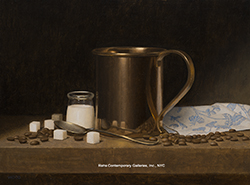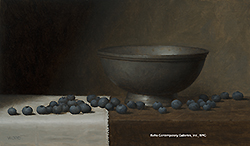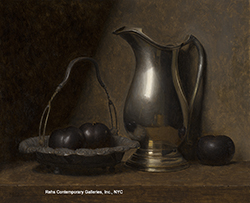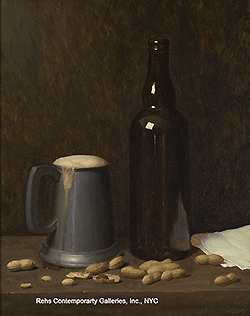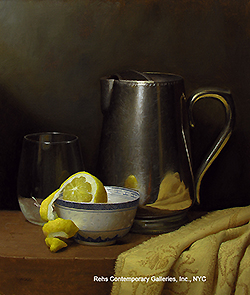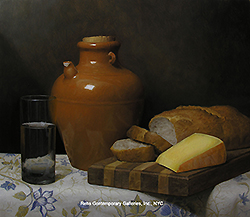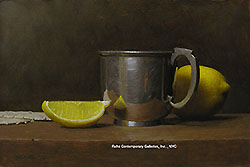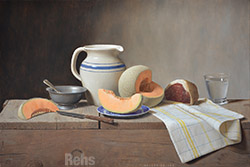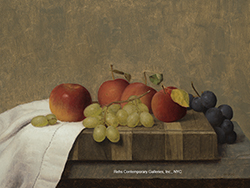BIOGRAPHY - Justin Wood (Born 1982)

As a child in Doylestown, Pennsylvania, Justin Wood enjoyed drawing for fun, but it was a high school art class that introduced him to oil painting and proved to be a turning point in his decision to become an artist. Fascinated with traditional figurative painting in oil, the young Wood set out to find a college art program that would allow him to study the subject in depth. Ultimately, he enrolled in the illustration program at Syracuse University where he studied with the internationally respected, award-winning faculty members, Murray Tinkelman and John Thompson.
However, Wood’s fervent interest in old master painting remained primary, especially his attraction to artists such as Rembrandt and Caravaggio whose command of oil painting technique was prodigious. That led to a life drawing class under the direction of Jerome Witkin, a realist figure painter and professor at the Syracuse University School of Art. For Wood, the opportunity to spend several sessions of a class working on a single drawing from a live model was invaluable; it gave him time to focus on drawing and learn how to capture the subtleties of light and shadow that distinguish traditional figurative painting.
After graduating in 2005 with a BFA in Illustration, Wood returned to Doylestown where he worked for about a year and simultaneously began researching art academies that offered a classically based curriculum. By 2007, he was on his way to New York City to study with Jacob Collins at the Water Street Atelier. In addition to being an artist that Wood admired, Collins had long been an advocate of classical realism and was closely associated with the revival of interest in this type of painting. The curriculum at the Atelier is based on the format established at the École des Beaux-Arts in Paris where students begin by studying drawing and copying from old masters, and then advancing to working from live models.
For the next five years, Wood studied at the Water Street Atelier, and also worked as Jacob Collin’s studio assistant for three of those years. Being able to develop and refine his skills as a figurative painter was exactly what Wood was seeking. The traditional techniques that he mastered at the Atelier have served him well. As he has noted, “I believe strongly in direct observation from life. It’s an important part of the painting experience and aesthetic. Committing to traditional working methods connects you to the larger culture of art and gives you the opportunity to produce work with the look and feel of the old masters.”
More recently Wood has begun to investigate still life painting. Not surprisingly, he admires the work of the traditional masters of the genre, in this case the seventeenth century Dutch painters such as Pieter Claesz and Jan Davidsz de Heem. Still life painting has also introduced another dimension to Wood’s work as he focuses on the materiality of objects and the complexity of creating an intriguing image from a grouping of inanimate items. The process of collecting “props” for the still life compositions has proved to be an unexpected pleasure as well, requiring trips to antique stores and second-hand shops in search of the perfectly shaped and textured object. For Wood, however, the goal always remains clear: “I’m trying to create scenes with well-crafted objects that are pleasant to look at and that create a decorative ensemble.”
Wood’s experience as assistant to Jacob Collins at the Water Street Atelier has also been beneficial, as it gave him the practical knowledge and discipline needed in maintaining a studio. After graduating, he was asked to join the faculty at Collins’ Grand Central Academy of Art, to teach cast drawing and painting. Between painting and teaching, Wood is well on his way to establishing himself as an artist in the classical realist tradition.
Janet Whitmore, Ph.D.
| ||||||||||||||||

